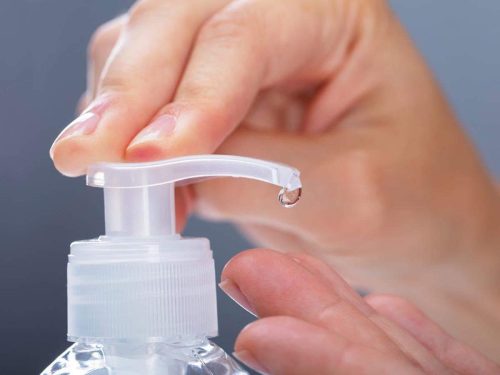
Hand sanitizers inactivate novel coronavirus, study finds
Tests have confirmed that two hand sanitizer formulations recommended by the World Health Organization (WHO) inactivate the virus that causes coronavirus disease 19 (COVID-19). The tests also provide reassurance that store-bought sanitizers combat the virus.
The results of the new tests have been published as a preprint in the journal Emerging Infectious Diseases.
In the absence of a vaccine or effective antiviral drugs, hand hygiene is a mainstay of efforts to prevent the spread of severe acute respiratory syndrome coronavirus 2 (SARS-CoV-2), the virus that causes COVID-19.
People who have the infection may show few, if any, symptoms, but still be able to transmit the virus. The virus spreads via droplets in the air or on commonly used surfaces, such as door handles.
Washing the hands thoroughly with soap and water for at least 20 seconds is a highly effective way to defend against harmful bacteria and viruses.
Handwashing isn’t always practical, however, especially for healthcare workers. This is due to a lack of access to running water, and a lack of sufficient time to wash the hands thoroughly.
Meanwhile, this group may be exposed to infection from a variety of sources throughout the course of each day.
Alcohol-based hand sanitizers provide a quick, simple alternative. However, there has been a lack of hard evidence that they are effective against SARS-CoV-2.
Guidelines to date have stemmed from research showing that the sanitizers inactivate other coronaviruses.
The WHO recommend two alcohol-based sanitizer formulations to prevent the spread of pathogens in general.
Now, scientists in Germany and Switzerland have tested the sanitizers’ effectiveness against SARS-CoV-2.
The first sanitizer comprises:
- ethanol — 80% by volume (vol/vol)
- glycerine (also known as glycerol) — 1.45% vol/vol
- hydrogen peroxide — 0.125% vol/vol
The second sanitizer comprises:
- isopropanol (also known as 2-propanol or isopropyl alcohol) — 75% vol/vol
- glycerine — 1.45% vol/vol
- hydrogen peroxide — 0.125% vol/vol
The researchers exposed SARS-CoV-2 virus particles to each formulation for 30 seconds.
When they tested the subsequent ability of the virus to infect cells in lab cultures, they found that both formulations had inactivated the virus.
The team was led by Professor Stephanie Pfänder, of the Department for Molecular and Medical Virology at Ruhr-Universität Bochum, in Germany.
“We showed that both WHO-recommended formulations sufficiently inactivate the virus after 30 seconds,” says Prof. Pfänder.
